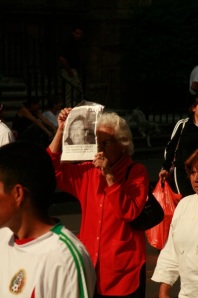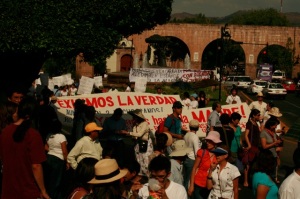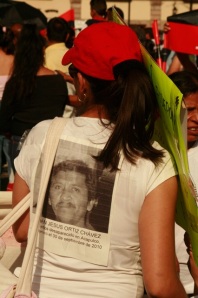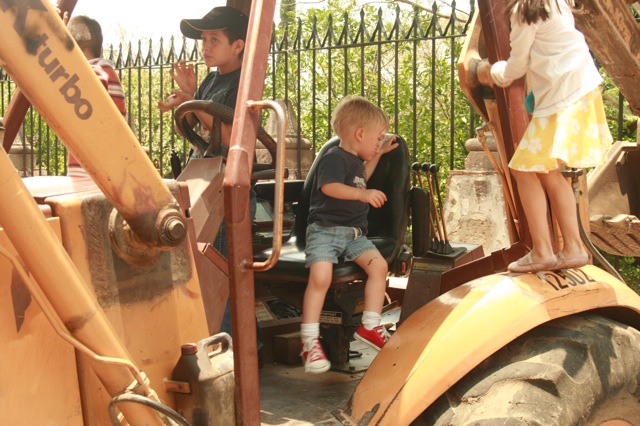Travel shouldn’t be torture, but it can feel that way when you have children with you. Like everything else that the parenting life throws at you, however, the more you do it, the easier it gets.
Because of jobs and hopelessly disperse families, we cover a lot of miles and cross a few borders; and we bring our children with us. Here are some of the tricks we’ve picked up along the way, and I have a powerful hope that the commentariat will pitch in a few more in the comment section below.
ON FLYING
I admit, I broke down and cried the first time I flew alone with a baby. Okay, I cried, threw a fit, and had to be escorted onto a plane. The socially acceptable hazing of parents on airplanes is cruel and unusual. (Unusual in the sense that other cultures don’t shun families the way that public transportation-averse Americans do.)
But then I got better at it.
“He’s just getting warmed up for the in-flight show,” I now joke with other people in line to board as my baby fusses. “I think he’s probably the headliner today.”
And walking down the aisle, I entertain myself by making eye contact with people sitting next to empty seats (especially if they’re male and wearing suits). I cock an eyebrow, smile wryly, and then, as I pass them by, I wink and whisper, “gotcha!”
Which is to say that, along with everything else, bring your sense of humor. It doesn’t matter if no one else thinks you’re funny. After all, your responsibility is to your kids, and that’s work enough. If the people around you need a mother to make them comfortable at every moment of every day, they should have brought their own.
Another tactic I’ve picked up is pleasantly passive aggressive. Children aren’t allowed to pre-board on many airlines anymore because first-classers won’t feel special if they have to share their privilege with the snot-nosed set (or the handicapped, for that matter). This leaves the obvious alternative—board last. In addition to spending as little time on the plane as necessary, it also ticks off the airline (they can’t push back until you’re ready) instead of the people behind you in line trying to get to their seats before their arms fall off under all those carry-ons.
Now I know to ask for what I need. Sure, I can get frustrated because my car seat weighs a ton and gets stuck between each row of seats and no one offers to help even though I’m clearly very pregnant and my toddler is running away. Or I can check in with the stewards at the front of the plane, or even back at the gate, and tell them I’ll need a hand. Once—but not before I asked politely—the pilot himself carried my car seat up the 95-odd steps from tarmac to the terminal while I carried baby and everything else.
(Yes, I use car seats on planes; don’t get me started.)
On big planes, I’ve found, there is usually someone who specializes in children. And flight attendants will almost always let you in on a secret: babies aren’t the most annoying travelers, not by a long shot. Ask the flight attendant to hold your baby while you go to the bathroom, or while you get your seat arranged. It’s part of their job to help, and they’re usually happy to do it. But don’t expect them to read your mind. And don’t try to be a hero—parenting was never a one-woman job, and it’s often a stretch even when there’s two of you.
WHERE TO STAY
The rule of preemptive asking works for hotels as well. Here in Mexico, I make sure every hotel I stay in knows ahead of time that I’m bringing a toddler and a baby. Searching for a place to stay in Guadalajara recently I sent an inquiry to one hotel that replied with a personal note explaining that, while they certainly weren’t in a position to turn away business and the choice to come was mine, they were a hotel designed for adults: there is breakable folk art on display and there are poisonous plants growing in the garden, the owner explained. (I owe them a shout-out for this: La Casa de los Flores is an honest hotel for adults).
I continued my research and discovered another hotel in the same neighborhood that recommended a particular room in which they could add a twin bed for my toddler, and while they are at it, they’re putting in a play pen for the baby. In the past, hotels have made other provisions—a lollypop on the kid’s bed, a carton of milk in the refrigerator, a plastic drinking cup alongside the glass, and, once, a teething ring in the freezer.
Had I booked online, an option most hotels offer even in developing countries these days, I would not have been allowing the hotels to do their best to accommodate me (or other guests).
Don’t limit yourself to places designed for families (these resorts are usually self-contained and don’t allow for real cultural engagement), but do choose a place where you’ll enjoy hanging out (it has a pool or nice outdoor spaces), even if it consumes a bigger chunk of your budget than you once designated for lodging; your hotel is no longer just crash-pad, it’s a major part of the destination.
WHAT TO DO WHILE YOU’RE THERE
The final challenge is the trip itself. Obviously, you won’t have the typical tourist experience. I had been to Mexico City’s Papalote Museo del Niño (the children’s museum) twice before I got to the magnificent Museo Nacional de Antropología (and even then I spent more time checking out the turtles in the reflection pool than the exhibits themselves). And at the ruins of Teotihuacán, rather than climb pyramids with the rest of the tourist hordes, we explored the nooks and crannies at ground level. (What is it with travelers climbing everything anyway?)
Just think how hard some travelers work to avoid the “beaten path.” With kids, you’re already in largely unchartered territory.
And what you need to do is not extraordinary to what you do at home. Pack plenty of snacks (and butter up the guard if he tries to make you leave them at the gate). Always carry Matchbox cars, or whatever your kids’ favorite pocket-sized toy happens to be (bring extras to share when they make friends). And never overdo it—for your sake, or your kids’.
There are a few rules of engagement that we’ve developed for traveling with small children.
Know where your exits are, otherwise known as, plan your escape route ahead of time. When things fall apart and your kid goes boneless or your frustration gets the better of you, break for lunch, get an ice cream, or hop in a taxi and call it a day. Room service or taking carry-out back to a hotel room is often the solution to kids’ overstimulation and parents’ exhaustion. Most restaurants are happy to pack up a meal, so you’re not even missing out on local cuisine. Sometimes, having dinner in the room actually allows you to dine leisurely and allows the kids to strip naked or crawl around on the floor or commit whatever kamikaze acts would have made a restaurant dinner catastrophic.
Avoid forced marches. No guided tours (unless the guide is working just for you—in which case come prepared to tip big). No loop trails (you want to know that the fastest way home is to turn around, not press on). Just keep telling yourself that cliche that it’s the journey that counts, not the destination. If you don’t get to the top to see the view, or all the way through the exhibit, or even to that wonderful place you were heading to see, shrug it off.
Also, strive to counterbalance control with freedom. After keeping your kids’ behavior on a short leash (in restaurants, shops, or museums), set them free in open spaces, preferably green ones. Free play is easy to forget to schedule when you’re away from home, but an afternoon at a park or playground may turn out to be a charming cultural experience. Often we encounter these spaces where we don’t expect them: an olive grove outside an old church becomes the focus of our visit to one village; after visiting a ruins complex for all of eight minutes, we spend two hours lounging in the shade by the front gate because our kid is obsessed with collecting strips of eucalyptus bark off the ground.
PLAYING IT SAFE
Comfort zones are often compromised when traveling. You’re worried about the water. There are no seatbelts in the taxis. You don’t know the fastest route to the closest hospital if something goes wrong. And this is before you run up against surprises: a scorpion on the sidewalk; jellyfish on the beach.
On this front, your best bet is to be informed. A pre-departure visit to a travel clinic—even if your kids don’t need any vaccinations—is a never a bad idea. These clinics will help you know what the real dangers are at your destination (opposed to what a worried imagination might cook up to nag you), how to preempt these dangers, and what to do on the off-chance you face them. The State Department website also has good destination-specific information.
Keep in mind that, just like at home, your partner and you may feel differently about the risks: compromising on your sense of your child’s safety isn’t something anyone should be pressured into, especially if you’re on vacation and trying to relax. Which is to say that in a safety situation the worried parent holds the trump card. Make a safe word, or some other way to signal that you aren’t okay with x or y.
This brings me to my final suggestion. Of all the little rules we have developed to help us travel with our kids, there is only one law that my partner and I have pledged to uphold: if one of us gets creeped out, and it doesn’t have to be for a good reason, we go home.
*
In any case, this is my playbook. But I’m just starting out. I know lots of you have your own carpetbags full of tricks, and I can use all the tips I can get. So, what works for you?












































